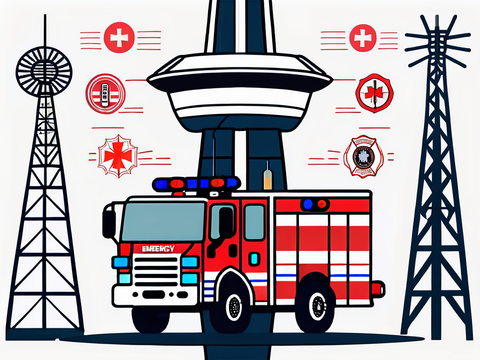

FEMA IS-702.A: National Incident Management System (NIMS) Public Information Systems Test Answers
The FEMA IS-702.A test is an important component of the National Incident Management System (NIMS) Public Information Systems. Understanding the NIMS Public Information Systems is crucial for effective emergency management and response.
Understanding the NIMS Public Information Systems
The NIMS Public Information Systems are designed to provide accurate and timely information to the public during emergencies. These systems play a critical role in ensuring that the public is informed, prepared, and able to make informed decisions in times of crisis.

Key Components of the NIMS Public Information Systems
The Public Information Officer (PIO) serves as the primary point of contact for coordinating public information efforts. The PIO is responsible for disseminating accurate and timely information to the public, media, and other stakeholders.
The Joint Information System (JIS) ensures the coordination and integration of public information activities within an Incident Command System (ICS) structure. It brings together various agencies, organizations, and jurisdictions involved in emergency response to ensure consistent messaging and communication.
Internal and external communication is vital for effective emergency response. Internal communication ensures that all personnel involved in the response efforts are informed and have the necessary information to carry out their roles. External communication focuses on providing the public with relevant and timely information, ensuring they are aware of potential risks and know how to stay safe.
Emergency public information and warning systems are essential in alerting and informing the public about emergency situations. These systems can include emergency alerts, sirens, social media, websites, and other communication channels.
Crisis communication involves managing and responding to information during high-stress situations. It requires clear and concise messaging, empathy, and understanding of public concerns and emotions.
Importance of the NIMS Public Information Systems
The NIMS Public Information Systems play a crucial role in emergency management. They ensure that accurate and consistent information is disseminated to the public, mitigating misinformation and panic.
During emergencies, the public relies on timely information to make informed decisions and take appropriate actions. The NIMS Public Information Systems help build trust and confidence among the public, ensuring that they have the necessary information to protect themselves and their communities.
Furthermore, the Public Information Officer (PIO) is not just responsible for disseminating information, but also for gathering and analyzing data to provide accurate updates. They collaborate with various agencies and organizations to ensure that the information being shared is reliable and up-to-date.
The Joint Information System (JIS) acts as a central hub for information exchange, ensuring that all involved parties are on the same page. This coordination is crucial in preventing conflicting messages and ensuring a unified response to the emergency.
When it comes to internal communication, it is not just about sharing information within the response team. It also involves providing support and guidance to the personnel on the ground, ensuring that they have the necessary resources and instructions to carry out their duties effectively.
External communication, on the other hand, goes beyond just issuing warnings and alerts. It involves engaging with the public, addressing their concerns, and providing them with actionable steps to stay safe. This two-way communication helps foster a sense of community resilience and encourages individuals to take proactive measures.
Emergency public information and warning systems are continuously evolving to keep up with technological advancements. From traditional sirens to social media platforms, these systems leverage various channels to reach the widest possible audience. This multi-channel approach ensures that the information reaches people through their preferred means of communication.
Lastly, crisis communication requires not only effective messaging but also empathy and understanding. The PIO must be able to relate to the public's emotions and concerns, providing reassurance and support during challenging times. By acknowledging and addressing these concerns, the PIO can help alleviate anxiety and foster a sense of trust and confidence in the information being shared.
Overview of FEMA IS-702.A Test
The FEMA IS-702.A test is designed to assess an individual's understanding of the NIMS Public Information Systems. It covers various topics related to emergency public information, communication, and coordination.
Structure of the FEMA IS-702.A Test
The FEMA IS-702.A test consists of multiple-choice questions that assess the knowledge and comprehension of the NIMS Public Information Systems. The test is typically timed and requires individuals to demonstrate their understanding of key concepts and principles.
Topics Covered in the FEMA IS-702.A Test
The FEMA IS-702.A test covers a wide range of topics, including:
- Roles and responsibilities of the Public Information Officer (PIO)
- Joint Information System (JIS) structure and functions
- Public information and warning systems
- Communication strategies during emergencies
The test also assesses an individual's ability to analyze and interpret emergency communication scenarios, applying the principles of the NIMS Public Information Systems.
Preparing for the FEMA IS-702.A Test
Proper preparation is essential to succeed in the FEMA IS-702.A test. Here are some study tips:
Study Tips for the FEMA IS-702.A Test
- Review the NIMS Public Information Systems: Familiarize yourself with the key components and principles of the NIMS Public Information Systems. Understanding the concepts will help you answer questions effectively.
- Practice with Sample Questions: Look for sample questions or practice tests related to the FEMA IS-702.A test. This will help you become familiar with the format and types of questions you may encounter.
- Use Learning Resources: Utilize official FEMA training materials, online resources, and study guides to enhance your understanding of the NIMS Public Information Systems.
- Form Study Groups: Collaborate with others who are also preparing for the FEMA IS-702.A test. Discussing the topics with peers can help reinforce your understanding and provide different perspectives.
- Take Timed Practice Tests: Simulate the actual testing conditions by taking timed practice tests. This will help you manage your time effectively during the real examination.
Resources for FEMA IS-702.A Test Preparation
There are various resources available to aid in your preparation for the FEMA IS-702.A test:
- Official FEMA training materials
- NIMS publications and guidelines
- Online courses and tutorials
- Publications from emergency management organizations
- Public information and communication case studies
Utilize these resources to gain a comprehensive understanding of the NIMS Public Information Systems and enhance your chances of success in the FEMA IS-702.A test.
Analyzing FEMA IS-702.A Test Answers
Understanding common mistakes and strategies for answering FEMA IS-702.A test questions can help improve your performance and ensure accurate responses.

Common Mistakes in FEMA IS-702.A Test Answers
Some common mistakes to avoid when answering FEMA IS-702.A test questions include:
- Not reading the question carefully: Take your time to understand the question and ensure you are answering what is being asked.
- Guessing without proper knowledge: Avoid guessing answers if you are unsure. Instead, eliminate incorrect options and make an educated guess.
- Ignoring context: Pay attention to the context provided in the question. It can provide clues or indicate the most appropriate response.
- Overthinking: Sometimes, the correct answer is the simplest one. Don't overcomplicate your responses.
- Not reviewing answers: Before submitting your final answers, review them to check for any mistakes or omissions.
Strategies for Answering FEMA IS-702.A Test Questions
To improve your chances of selecting the correct answer in the FEMA IS-702.A test, consider the following strategies:
- Read the entire question and all options before choosing an answer.
- Eliminate obviously incorrect options to narrow down your choices.
- Pay attention to keywords or phrases that indicate the correct response.
- Utilize your understanding of the NIMS Public Information Systems to reason through the question and options.
- If unsure, make an educated guess by eliminating as many incorrect options as possible.
These strategies can help you approach and answer FEMA IS-702.A test questions with greater accuracy and confidence.
The Role of FEMA IS-702.A in Emergency Management
FEMA IS-702.A plays a significant role in enhancing emergency management and response through the implementation of effective public information systems.

How FEMA IS-702.A Enhances Emergency Response
By understanding and applying the principles covered in FEMA IS-702.A, emergency management professionals can:
- Coordinate and disseminate accurate and timely information
- Establish efficient communication channels
- Educate and inform the public about potential risks and protective measures
- Build trust and confidence among the public
- Mitigate misinformation and panic
Effective implementation of the concepts covered in FEMA IS-702.A can significantly improve emergency response efforts and ensure the public's safety and well-being.
The Impact of FEMA IS-702.A on Public Information Systems
FEMA IS-702.A's focus on public information systems highlights their significance in emergency management. It emphasizes the need for effective communication, coordination, and dissemination of accurate information to the public.
By equipping emergency management professionals with the knowledge and skills to operate within the NIMS Public Information Systems framework, FEMA IS-702.A ensures a consistent, coordinated, and informed approach to public communication during emergencies.
In conclusion, the FEMA IS-702.A test assesses an individual's understanding of the NIMS Public Information Systems and their role in emergency management. By preparing effectively, analyzing test answers, and understanding the impact of FEMA IS-702.A, emergency management professionals can enhance public information systems and contribute to effective emergency response efforts.
